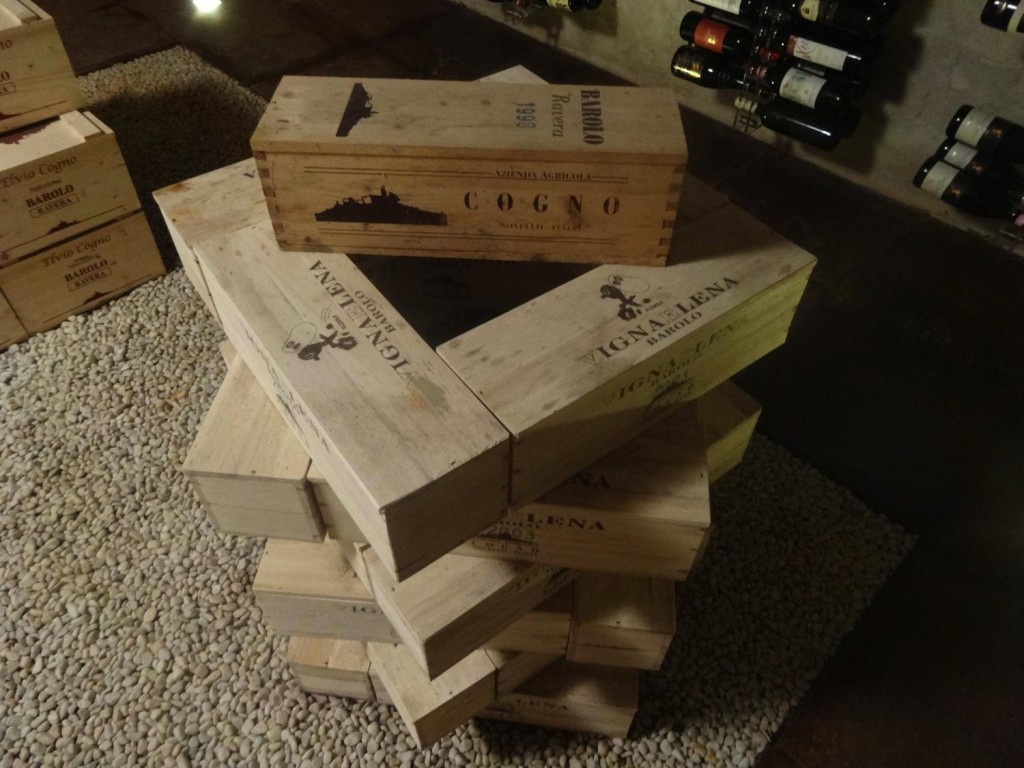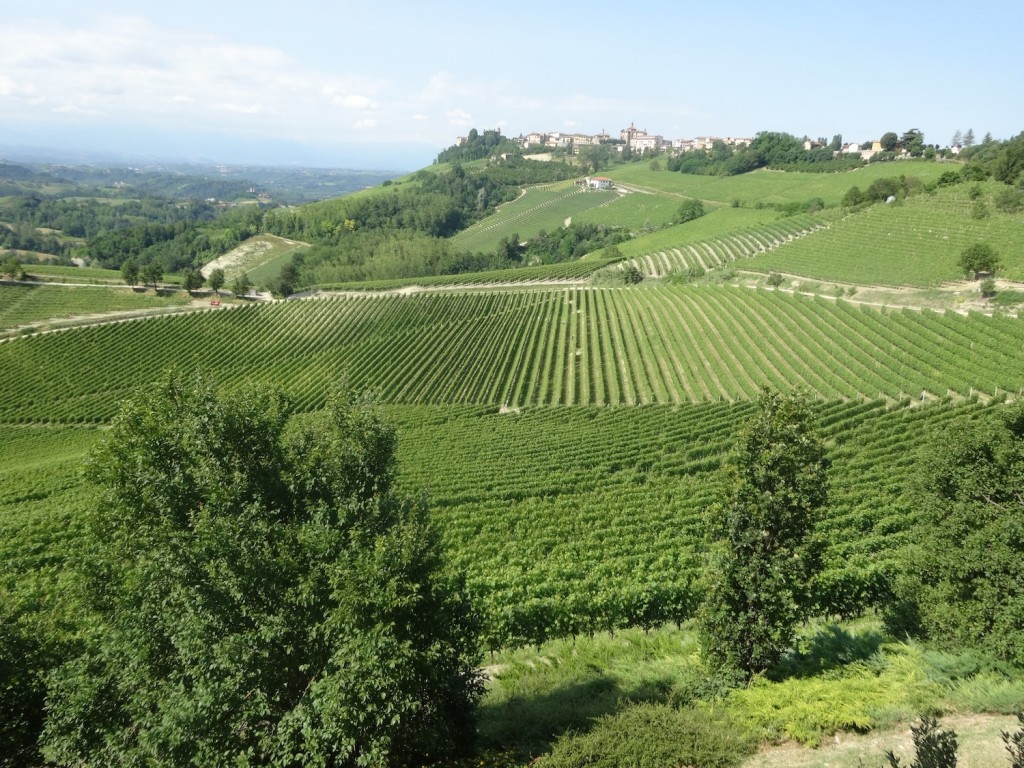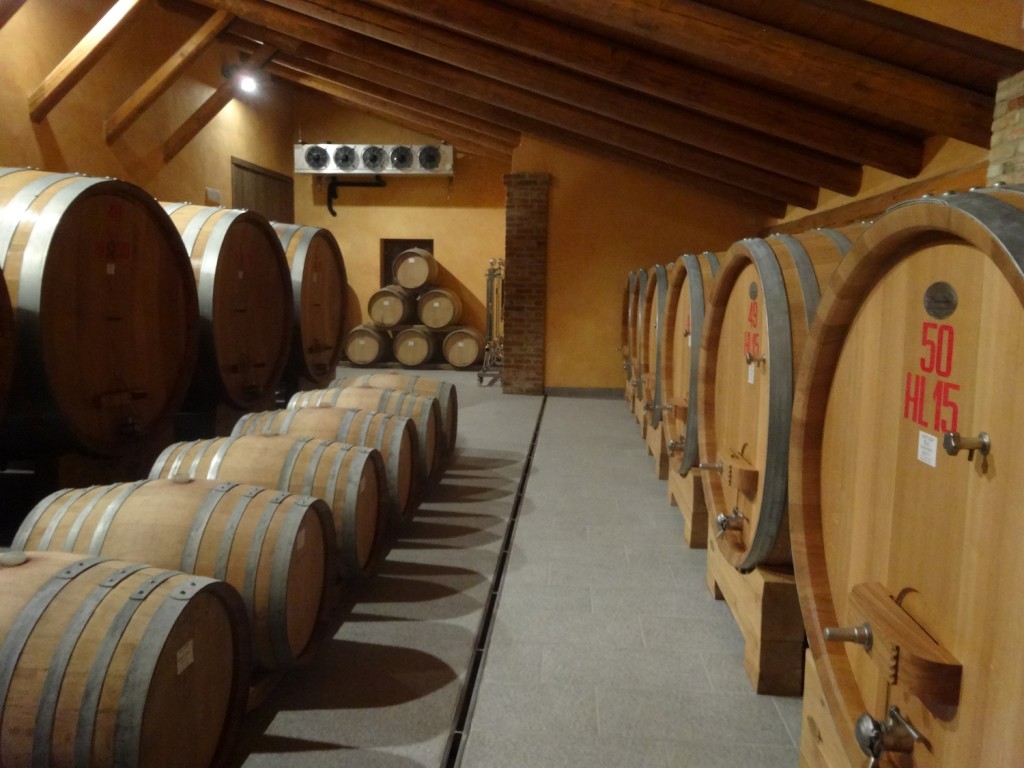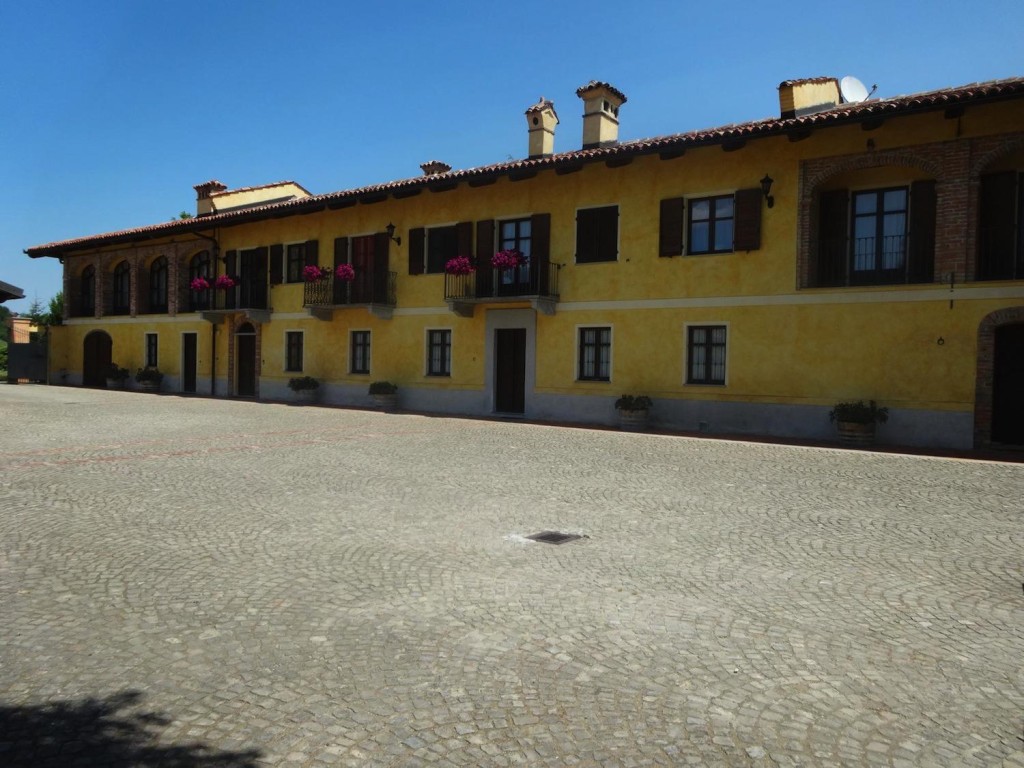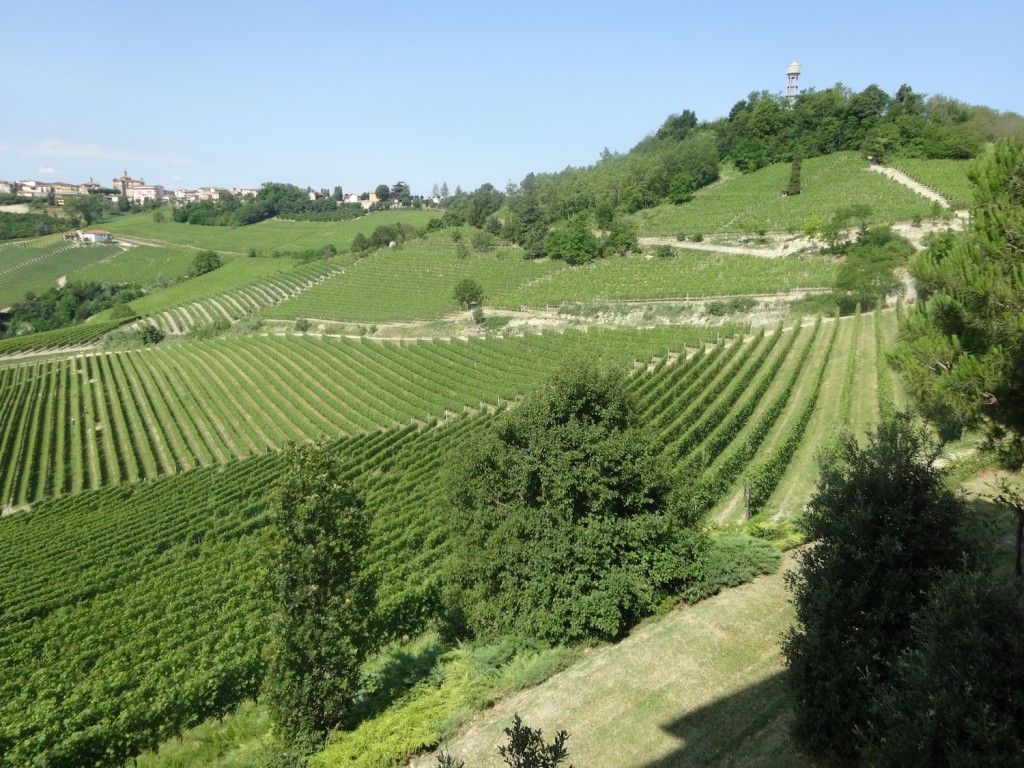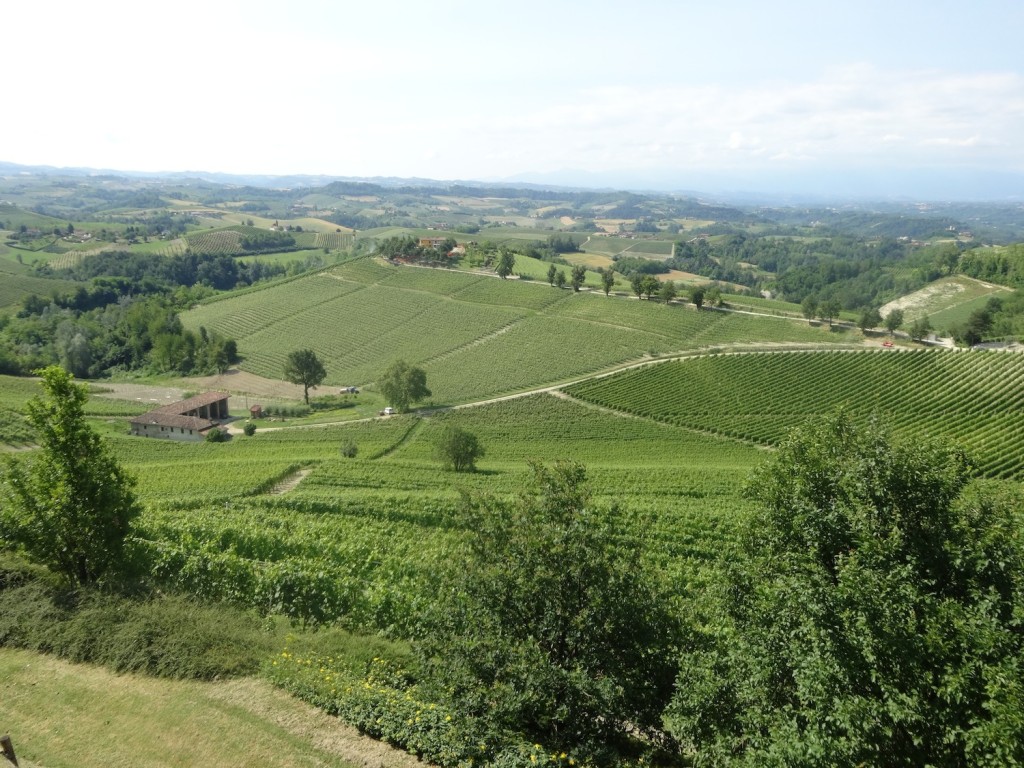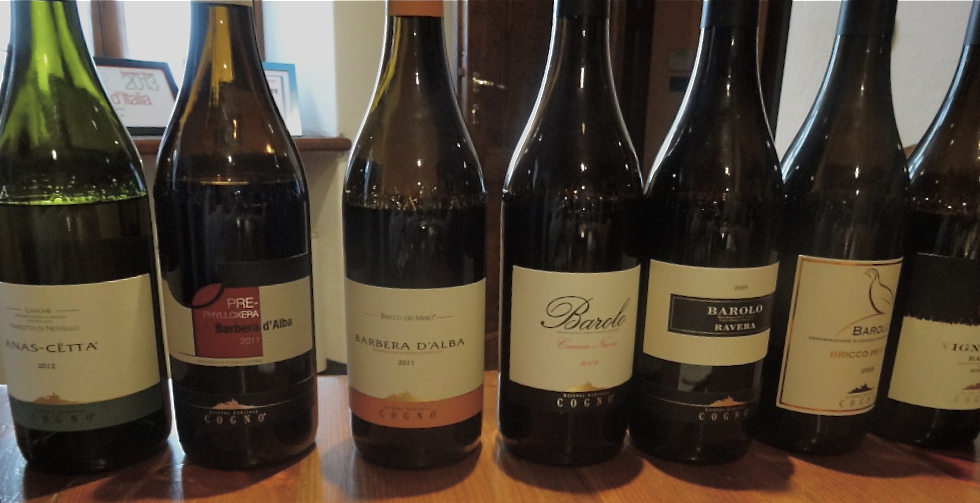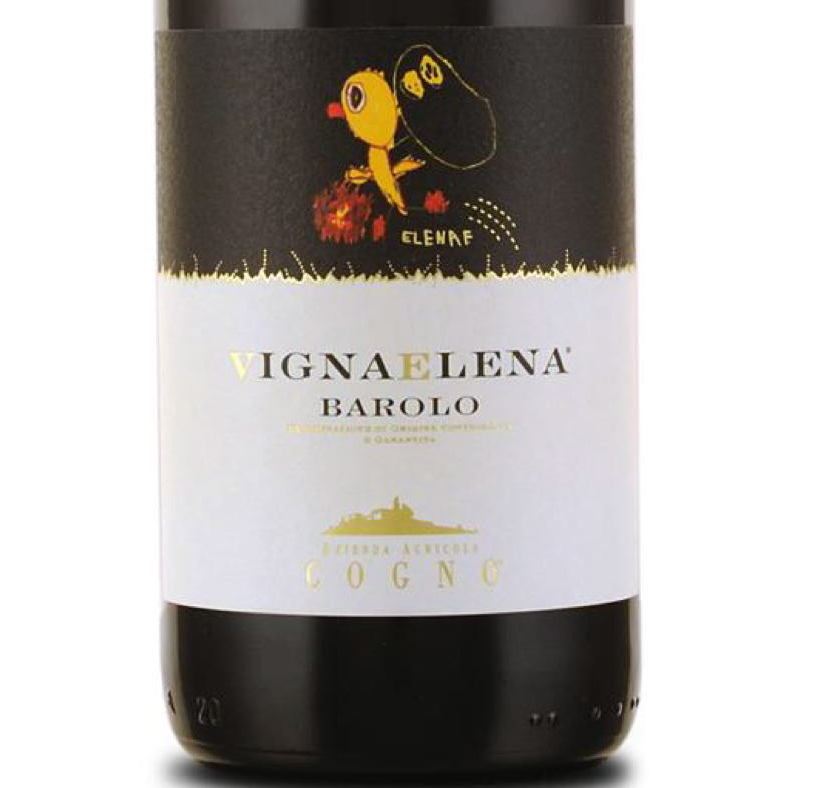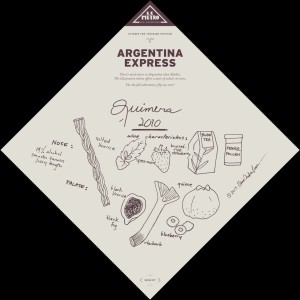This past summer I spent four days in Piedmont, the northern Italy wine region famous for Barolo and Barbaresco. I wanted to understand the Nebbiolo grape, and the differences in Barolo and Barbaresco. Going to the place where the vineyards are planted and the wine is made is the best way to learn about this grape that only grows well in the region called the Langhe, a beautiful valley carpeted in vines up and down the gently rolling slopes, punctuated by hilltop villages.
Of my four or five winery visits, my absolute favorite was Elvio Cogno, a small producer whose family vineyard and winery is located just outside the village of Barolo.
I discovered Cogno at one of the Wine & Spirits top 100 tastings in San Francisco. In 2011 Cogno was the Winery of the Year. I kept the brochure with my tasting notes. When it came time to plan my trip to Italy last June, I found it in my Italy folder, so I emailed and asked for an appointment.
The morning of our visit, my husband and I drove from La Morra, where we were staying in a lovely inn to Azienda Agricola Cogno in Novello . Owner and winemaker Valter Fissore greeted us upon arrival. I guess I was expecting more of a tasting room situation; I had not expected a private tour and tasting. Lucky for us that’s how it turned out.
Valter’s wife’s is Nadia Cogno; her father is Elvio Cogno, namesake of the winery. For many generations the family grew grapes and made wine in La Morra. In 1990 the Cognos bought the current winery and house, an 18th century farmhouse, and surrounding vineyards. It is the cleanest winery I have ever seen, and I have been in hundreds of wineries around the world. You could eat off the floors. The family restored the building and did a lovely job incorporating modern winemaking facilities while maintaining the rustic farmhouse feel. In fact they earned the UNESCO award La Fabbrica nel Paesaggio (the factory in the landscape) in 2012 for their restoration work.
Cogno produces 80,000 bottles per year. In Italy they quantify production in terms of bottles while in the US we talk cases. For Cogno that’s almost 7,000 cases annually, what we would consider a small winery.
Barolo is the focus here, with single vineyard bottlings coming from 13 hectares (32 acres) of vines. Valter also makes small amounts of a white wine called Anas-Cetta, made from the Nacetta grape; a Barbera d’Alba and a Dolcetto d’Alba. The oldest Nebbiolo vines are are about 70 years old. He also has a Barbera vineyard with 120 year old vines that somehow survived phylloxera and remain ungrafted. “I produce only 1080 bottles of this Barbera, it is a beautiful wine,” he says.
Valter proudly points out the Ravera vineyard, his best vineyard, what would be a cru vineyard in France. It’s a hillside vineyard with a southern exposure. “We have a lot of limestone clay soil here,” Valter says. “This is our most powerful Barolo.” Nebbiolo also needs heat to ripen properly. That’s why southern facing vineyards as so important for Cogno.
The views are breathtaking. Valter explains there is both a mountain and maritime climate here, thanks to the proximity of the Alps and the Mediterranean. “The reason we make Barolo here is the soil and microclimate,” he says. “We have wind from the sea that meets the wind from the north from the Alps and it meets and every year we have one meter of snow. This is the reason we don’t have to irrigate. We also have very good diurnal temperature swings between night and day, very important for Nebbiolo.” He adds that Nebbiolo grows so well in Piedmont because of the limestone soils, full of fossils, that you don’t find anywhere else in the world. “They try to grow Nebbiolo in other places but it doesn’t work,” Valter says. “It’s like trying to plant Pinot Noir here, it doesn’t work here, it’s too warm for Pinot.”
Valter tells us that while his grape growing is not biodynamic or certified organic, they do not use pesticides and try to use a minimal amount of sulfur in winemaking. “We bottle during the full moon,” he says, a fact that fascinates my husband. Valter explains that he tried bottling once when the moon was not full. “I tried it on the 1991 Barolo,” he says. “The wine was full of sediment and not so good.”
The Cogno Barolos go through fermentation for about 10 to 12 days, then the cap gets submerged and stays submerged for another 25 days or so. That’s a total fermentation time of 40 to 45 days, an extremely long time. “The reason is it gives us a wine more complex, with more fruit and more personality,” Valter explains. The wines are aged four years in barrel and bottle before release.
As we sit down to taste wine, Valter’s wife Nadia brings us a beautiful platter of local cheese and homemade salumi. As he’s pouring, Valter says his winemaking style is to show fruit, elegance and terroir. He doesn’t like a lot of barrel influence in his wines.
I love the 2012 Anass-Cetta; it’s my new favorite Italian white varietal. This wine, made from the Nascetta grape, is very aromatic, with rich stone fruit and white floral notes. There’s some sage and nuttiness, plus lots of minerality. With a nice long finish, you can sip this all day.
The 2011 “Pre-Phylloxera” Barbera d’Alba was a fun wine to taste; very earthy and intense. He doesn’t make this every year. Valter’s other Barbera, the 2011 Bricco dei Merli has much brighter black fruit with spice, but it’s soft and elegant.
In all of Elvio Cogno’s Barolos I get a wonderful violet floral note. the 2009 Cascina Nuova comes from the youngest vineyards and shows earth, tar and leather along with balance tannins. The 2008 Bricco Pernice has more violet and bright red fruit. It definitely has more tannin and power than the Cascina Nuova.
The 2009 Barolo Ravera is the flagship wine of Elvio Cogno, coming from 67 year old vines. It’s extremely complex, with notes of black fruit, licorice, mint, tobacco and dried roses. The wine is powerful yet elegant, surprisingly soft in the mouth. Yes there are tannins to be sure, but they don’t knock you out.
The label on the 2007 Barolo Riserva Vigna Elena was designed Valter’s daughter Elena. Now she is a graphic designer (she also created the Bricco Pernice and Pre-Phylloxera Barbera label) but when she was three years old she drew a chick for her parents. That became the label for Vigna Elena, also named for her. This Barolo has a more subtle nose, with roses, tobacco and spices and it is very drinkable, with soft tannins.
Staying on the sidelines is Valter’s approach to winemaking. “We work to respect the characteristic of the soil and the characteristics of the vineyard,” he explains. “When you drink my wine I want you to understand this is Barolo, this is Nebbiolo, this comes from Piemonte. This is very important, I don’t want you to drink my wine and say ‘oh this is very good but where does it come from?’ The philosophy is terroir, terroir, terroir.
Valter’s passion is evident, something he says he learned from his father-in-law Elvio Cogno. “I learned many things from him, the knowledge I have the experience too but the passion, he has given me a lot of passion.”
Our visit ends with a tour of his private underground cellar, where they store older vintages of Cogno. The walls are limestone; basically you are locking at what’s below the surface of the vineyards. You understand the importance of the soil, of the land, of the climate and ultimately why Barolo can only come from Barolo.
In September 2013, Elvio Cogno was named Wine & Spirits Magazine’s Winery of the Year for the third time. After visiting and tasting wines with Valter, I am not at all surprised. It is a well-deserved honor.

